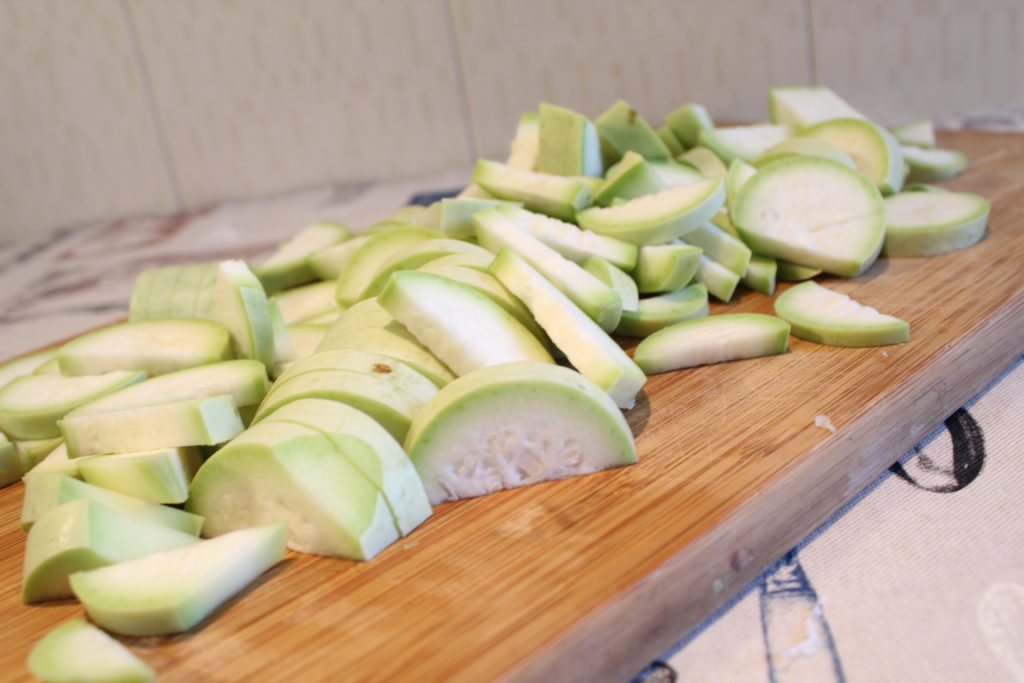Also known as Kreatokoloko.
This unique variety of courgette features light green skin, white to yellowish flesh and small, edible seeds. Thriving in warm environments with abundant water, it is typically planted in April and May and harvested in the peak summer months of July and August. Well adapted to Cyprus’s climate conditions, it requires no fertilizers and grows naturally, with farmers allowing the fruits to mature fully before harvesting to maximize yield. Many of its seeds are carefully preserved for replanting the following year.
Unlike other courgette varieties, this one does not produce an abundance of flowers, meaning they are not commonly stuffed with rice and minced meat as in traditional stuffed courgette flowers. Using the flowers for stuffing would significantly reduce the crop yield.
In the past, zampoura was not only a culinary staple but also had decorative and practical uses. Once dried and painted, it served as an ornamental item, and in some cases, people even used it as a storage container for cutlery.
Beyond decoration, zampoura was highly valued in Cypriot cuisine, especially in certain regions where stuffing it was a common practice. According to Mrs. Despina Aresti, in her village of Akanthou, zampoura was considered their signuture dish, often prepared as a stew with chicken, pork or lamb. It held special cultural importance—when a man visited a bride’s family to ask for her hand in marriage, it was the dish traditionally served to him. Given that in Cyprus, meat was a rare luxury in the past, reserved for festive occasions like Christmas or Easter, the fact that zampoura stew was chosen for such a significant event highlights its deep-rooted importance in local tradition.
Zampoura has a naturally sweet, juicy, and delicate taste, with a higher water content than other courgette varieties. Since it holds so much moisture, proper cooking is essential to prevent the dish from becoming too watery. To achieve the right texture and depth of flavour, it must be fried long enough to release excess water before simmering.
First, onion should be fried with plenty of olive oil in a saucepan until golden. Next, the meat is added and cooked until browned. Zampoura is cut lengthwise and then in crescent-shaped slices and added to the saucepan. Then, some water is added with freshly grated tomato, tomato paste, salt, pepper, lemon, and spices of your preference -typically cumin- and the food is let to simmer. Before all the water evaporates, more olive oil is added. It can be cooked in a pressure cooker to help break down the meat and make it tender. Chicken and pork work great but lamb complements this dish best as it gives it a richer flavour and better texture.


